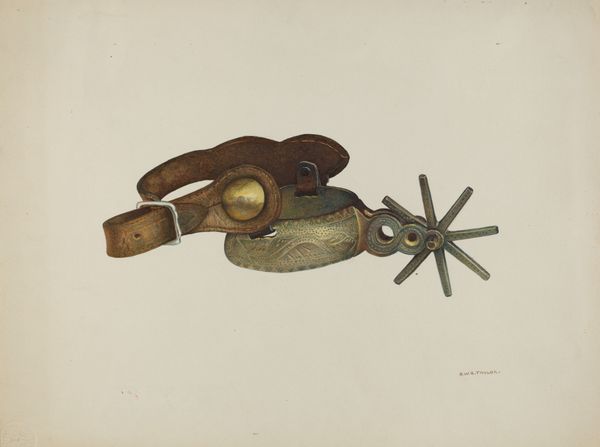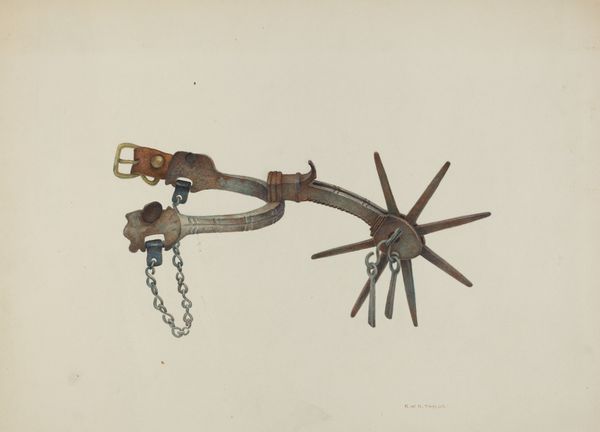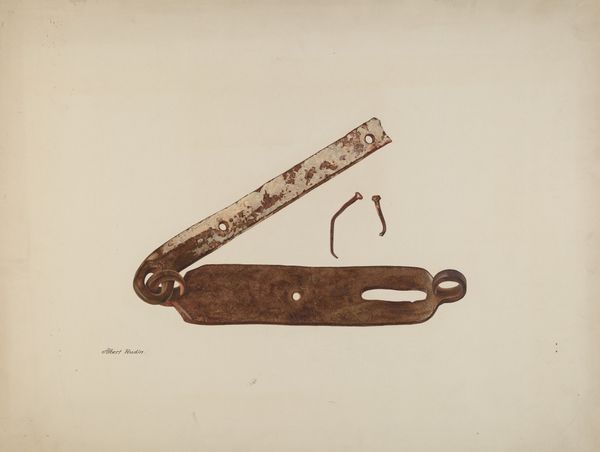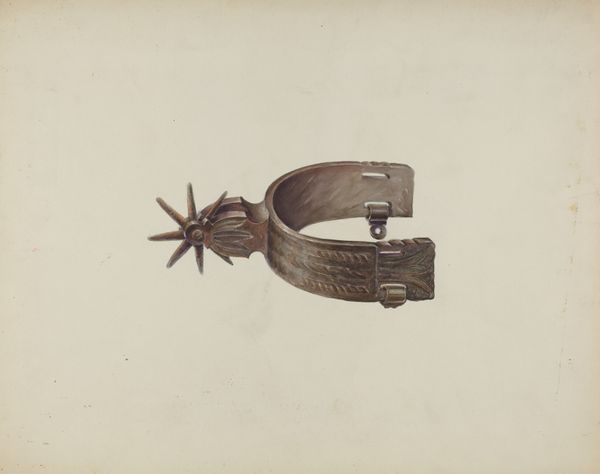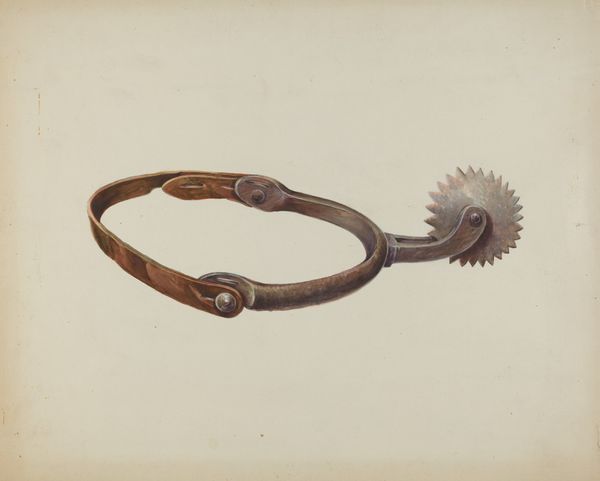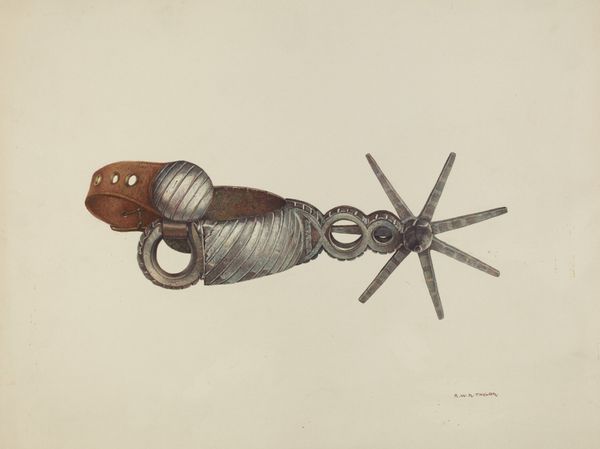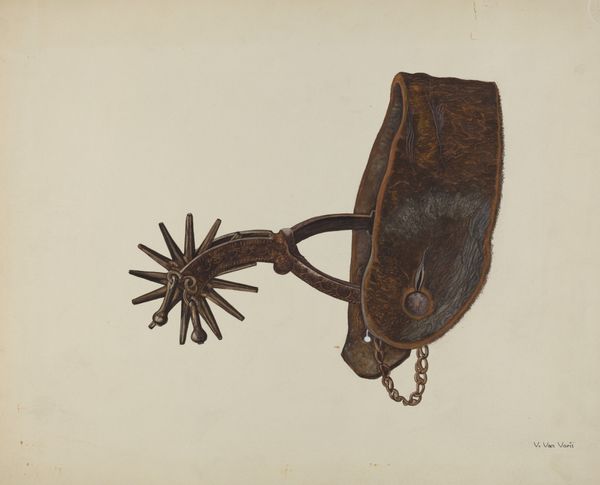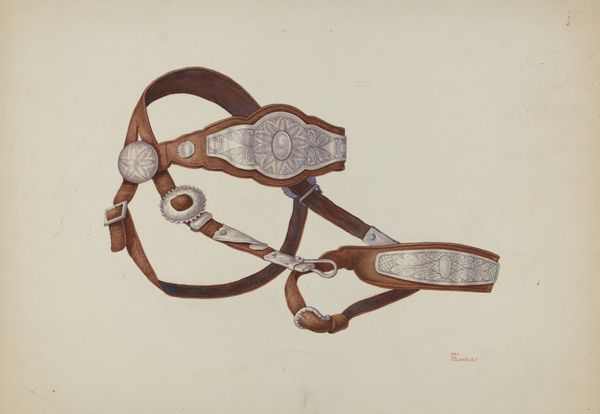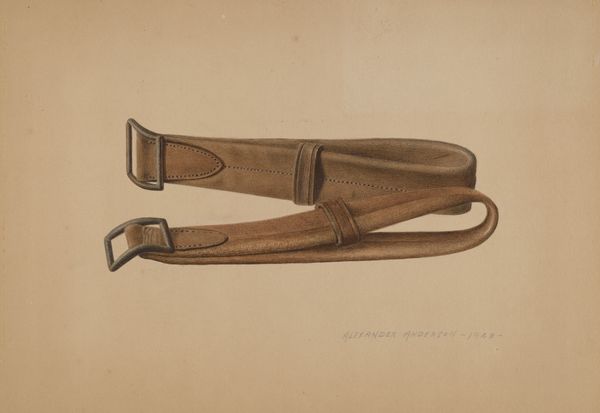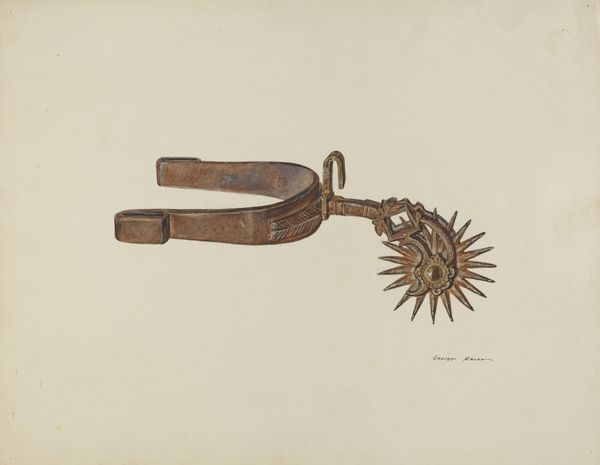
drawing, watercolor
#
drawing
#
watercolor
#
pencil drawing
#
coloured pencil
#
watercolour illustration
#
watercolor
Dimensions: overall: 26.7 x 35.6 cm (10 1/2 x 14 in.)
Copyright: National Gallery of Art: CC0 1.0
Curator: I find myself staring into Robert W.R. Taylor's "Spur," created around 1938, a fascinating drawing done in watercolor. It's striking, isn't it? So clear and almost clinical, but I also feel a weird warmth from it, perhaps something nostalgic? Editor: Yes, warmth is the key here. For me it brings images of the rugged individualism associated with cowboys. What do you read into the presence of that decorative, daisy-like detail on the side? Curator: Well, traditionally, spurs serve the symbolic role of compelling or motivating, don't they? Like urging something, a horse or even one's self, toward a particular course. Maybe that flower suggests a softened, humanized side to that forceful drive? Or perhaps it is just decorative! Editor: Decorative, yes, but even decorative details like that have symbolic resonance. The daisy often appears in art to show simplicity, purity, innocence – all somewhat opposed to that very adult instrument, the spur. And here, on the spur's leather strap? I suspect the artist might be hinting that those very characteristics will get trodden underfoot eventually! Curator: Ah, I love your slightly darker interpretation, drawing out what is not initially evident, especially how that is a flower that could wilt in time! Did Taylor choose watercolour as his preferred medium because of its unique transparency? Editor: The texture of watercolor almost lends itself to transparency as you said, as well as creating gradients that are ideal for portraying reflective surfaces. You notice how Taylor depicts the glinting metal through this medium. It adds dimension. Speaking of dimension, how does this simple line-art come across for you? Curator: It feels strangely intimate, a chance to see something mundane rendered beautifully. I feel compelled to study the details that would likely be passed over quickly, or lost, on a physical object. A spur is purely functional, after all, and this artistic choice almost bestows some sort of strange, singular honor to it. What about you? Does it resonate with a specific emotional or cultural memory? Editor: For me, the drawing speaks to a larger meditation on how objects absorb the character of those who use them. Spurs evoke specific narratives of the Old West and American myths, which resonate deeply through our popular culture. In a way, it serves as a sign of our cultural identity and ideals—not necessarily always for the better! Curator: It seems an artifact immortalized on paper, offering us some portal into contemplation that would not otherwise exist in this manner. Editor: Exactly!
Comments
No comments
Be the first to comment and join the conversation on the ultimate creative platform.
